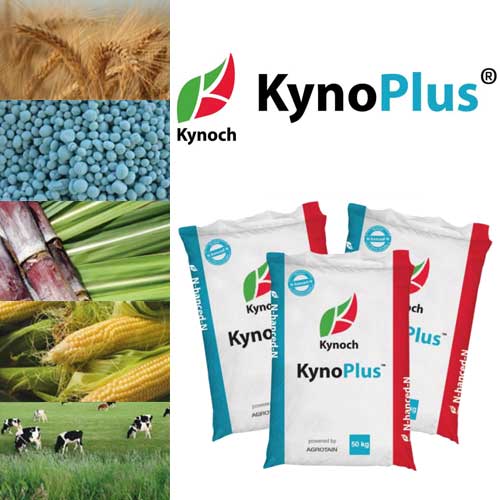
Stress management strategies for wheat
04/06/2024
Acidity related definitions critical for interpretation
01/08/2024Where to expect trace element deficiencies?
Almost all trace element deficiencies will show stunting of plants and some type of discoloration. They all could affect yield negatively. It is important to quantify the levels of each elements’ availability before planting by means of a soil analysis. During the growing season, leaf samples could also be analysed in order to verify the crops’ status. Deficiencies of trace elements could be expected in the following situations:
| Conditions | Trace element/s expected to be in deficiency |
|---|---|
| Sandy soils | B, Cl, Cu, Fe, Mn, Mo, Zn |
| High soil pH (>7) | B, Cu, Fe, Mn, Zn |
| High calcium carbonate content in soils | B, Cu, Fe, Mn, Zn |
| Recently limed soils | B, Cu, Fe, Mn, Zn |
| High salt content (brackish) | Cu, Fe, Mn, Zn |
| High organic material content | Cu, Mn, Zn |
| Acid soil | Cu, Mo, Zn |
| Clayish soil | Cu, Mn, Zn |
| Water saturated soil | Zn |
| Dry conditions (lack of water) | All |
| Continuous crop removal | ??????? |
B = Boron, Cl = Chloride, Cu = Copper, Fe = Iron, Mn = Manganese, Mo = Molybdenum, Zn = Zinc
Conclusion:
In nature, trace element deficiencies could be expected in certain conditions. However, after years of cultivation, associated with crop removal, deficiencies could manifest almost everywhere.
Source:
Havlin, Beaton, Tisdale & Nelson, (1999). Soil Fertility and Fertilizers. Prentice Hall, New Jersey, USA.
National Fertilizer Solutions Association, (1982). Liquid Fertilizer Manual. Illinois, USA.
Compiled by:
Compiled by Dr Chris Schmidt, Senior Agriculturist at Kynoch Fertilizer
FAQ about Trace Element Deficiencies in Agriculture
What are trace element deficiencies in crops?
Trace element deficiencies in crops occur when essential micronutrients, also known as trace elements, are lacking in the soil. These elements include iron (Fe), manganese (Mn), zinc (Zn), copper (Cu), molybdenum (Mo), boron (B), and chlorine (Cl). Although required in small quantities, their absence can lead to significant health issues in plants, affecting their growth and productivity.
Why are trace elements important in agriculture?
Trace elements are crucial in agriculture as they play vital roles in various physiological and biochemical processes within plants. They are involved in enzyme function, photosynthesis, nitrogen fixation, and the synthesis of essential compounds like chlorophyll. Adequate levels of these elements ensure healthy plant growth, optimal yield, and quality produce.
What are the harmful trace elements in soil?
While many trace elements are beneficial, some can be harmful when present in excessive amounts. Harmful trace elements in soil include lead (Pb), cadmium (Cd), arsenic (As), mercury (Hg), and chromium (Cr). These toxic elements can cause detrimental effects on plant health, reduce crop yield, and pose risks to human and animal health when they enter the food chain.
How do trace elements affect plant growth?
Trace elements affect plant growth by participating in essential biochemical reactions and structural functions. They help in the formation of chlorophyll, protein synthesis, hormone production, and disease resistance. A deficiency or imbalance of these elements can lead to stunted growth, chlorosis (yellowing of leaves), reduced yield, and poor-quality produce.
What are the deficiencies of trace elements?
Deficiencies of trace elements in plants can include:
- Iron Deficiency: Causes chlorosis, especially in young leaves.
- Manganese Deficiency: Leads to interveinal chlorosis and brown spots on leaves.
- Zinc Deficiency: Results in stunted growth and smaller leaves with chlorotic patterns.
- Copper Deficiency: Causes wilting, reduced flowering, and chlorosis.
- Molybdenum Deficiency: Leads to yellowing of leaves and poor growth.
- Boron Deficiency: Causes brittle, deformed leaves, and poor fruit and seed development.
- Chlorine Deficiency: Results in wilting, leaf bronzing, and chlorosis.
What are the symptoms of element deficiency in plants?
The symptoms of element deficiency in plants include:
- Yellowing or pale leaves (chlorosis)
- Stunted growth or reduced height
- Leaf necrosis or dead spots
- Poor fruit and flower development
- Deformed or brittle leaves
- Wilting and drooping
How to fix nutrient deficiency in plants?
To fix nutrient deficiency in plants, consider the following steps:
- Soil Testing: Conduct a soil test to determine the specific deficiencies and nutrient levels.
- Fertilisation: Apply appropriate fertilisers containing the deficient nutrients. Use chelated forms of trace elements for better absorption.
- Foliar Feeding: Apply nutrient solutions directly to plant leaves for rapid correction.
- Organic Amendments: Use compost, manure, or other organic amendments to improve soil fertility and structure.
How to fix phosphorus deficiency in soil?
To fix phosphorus deficiency in soil:
- Phosphorus Fertilisers: Apply phosphorus-rich fertilisers such as superphosphate, bone meal, or rock phosphate.
- Adjust pH: Ensure soil pH is within the optimal range (6.0-7.5) for phosphorus availability.
- Mycorrhizal Fungi: Use mycorrhizal inoculants to enhance phosphorus uptake by plants.
How to fix potassium deficiency in soil?
To fix potassium deficiency in soil:
- Potassium Fertilisers: Apply potassium-containing fertilisers such as potassium sulphate, potassium chloride (muriate of potash), or wood ash.
- Organic Matter: Incorporate compost or well-decomposed manure to improve potassium availability.
- Soil pH: Ensure the soil pH is suitable (6.0-7.0) for optimal potassium absorption by plants.
Understanding and addressing trace element deficiencies in agriculture is essential for maintaining healthy crops, achieving high yields, and ensuring food security. Regular soil testing, appropriate fertilisation, and soil management practices can help mitigate these deficiencies effectively.






.png?v=1594369838025?v=1594369838026)